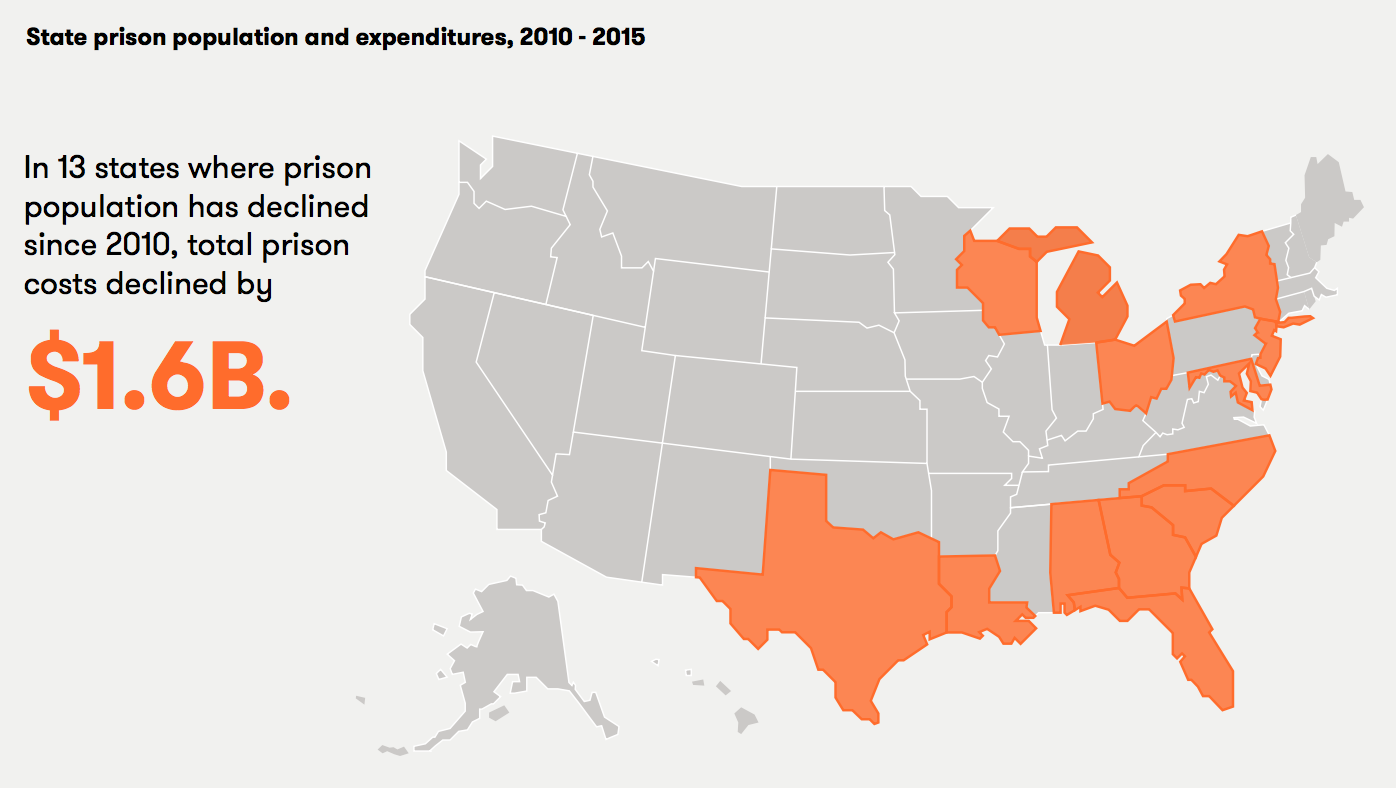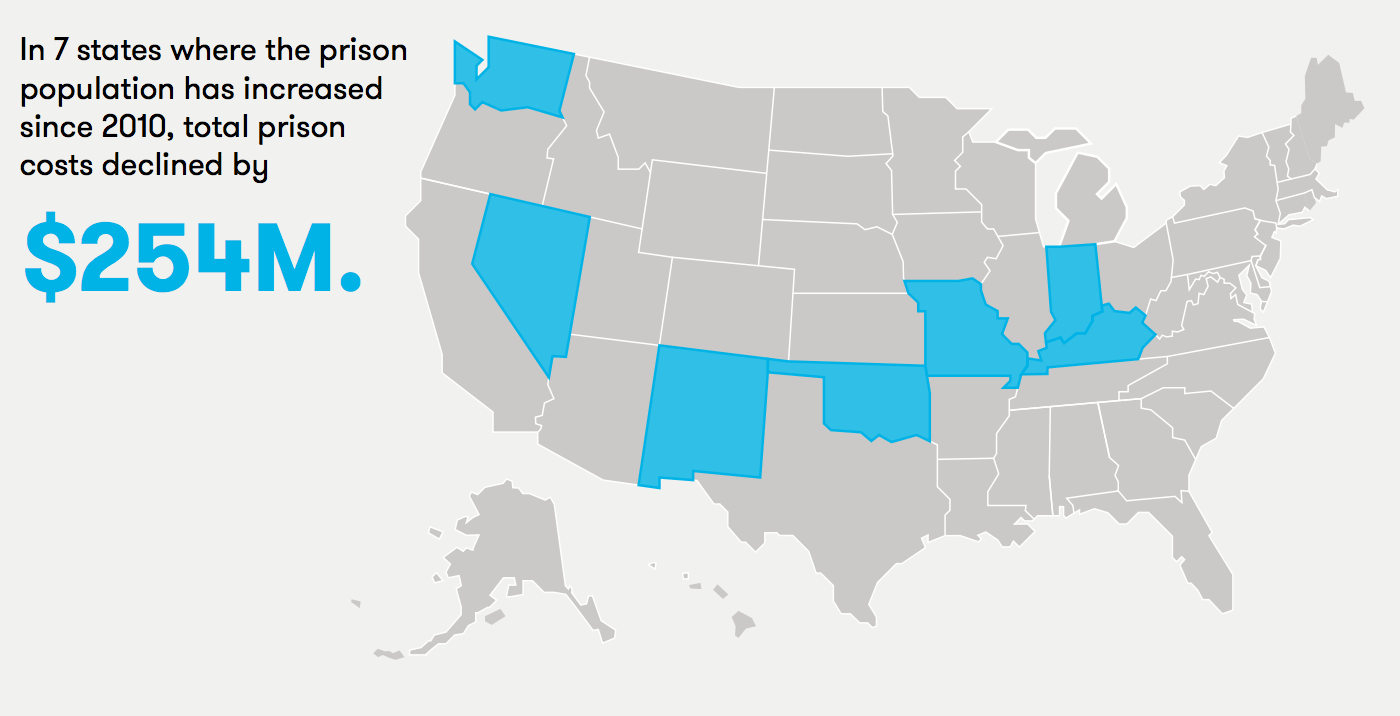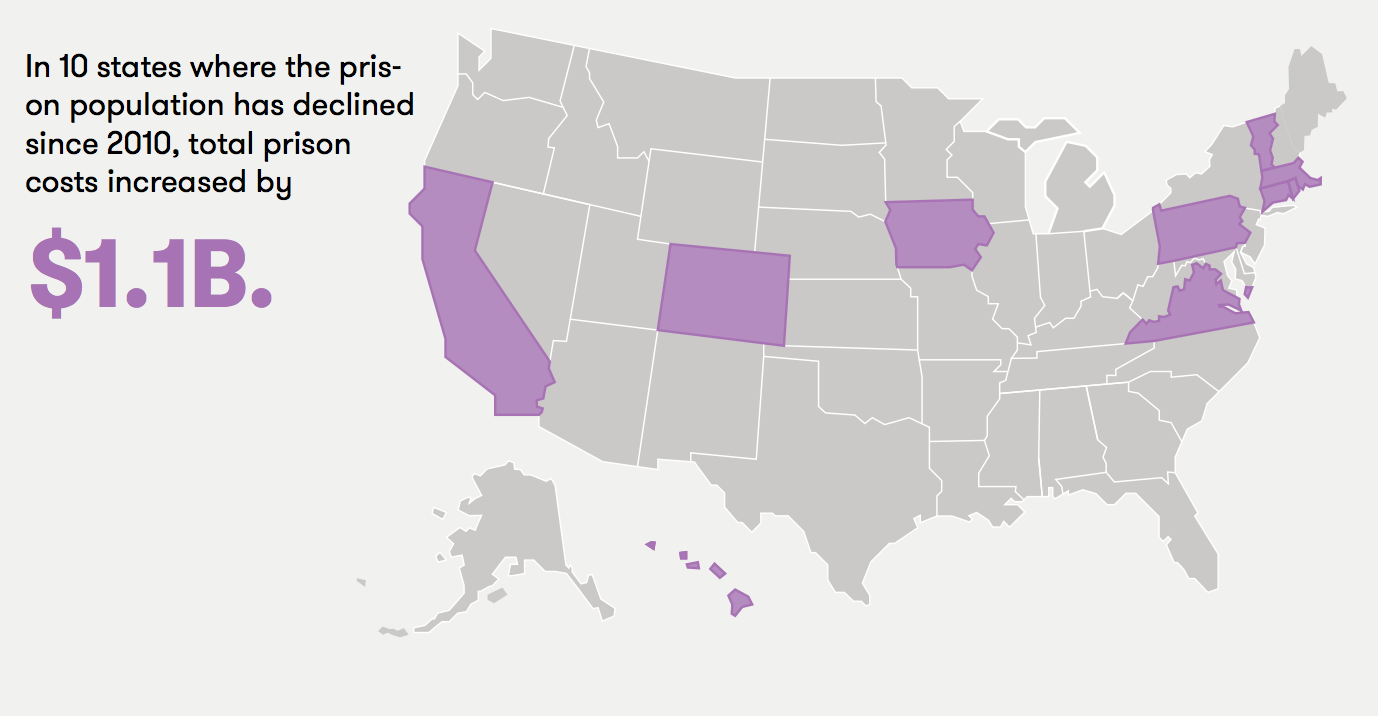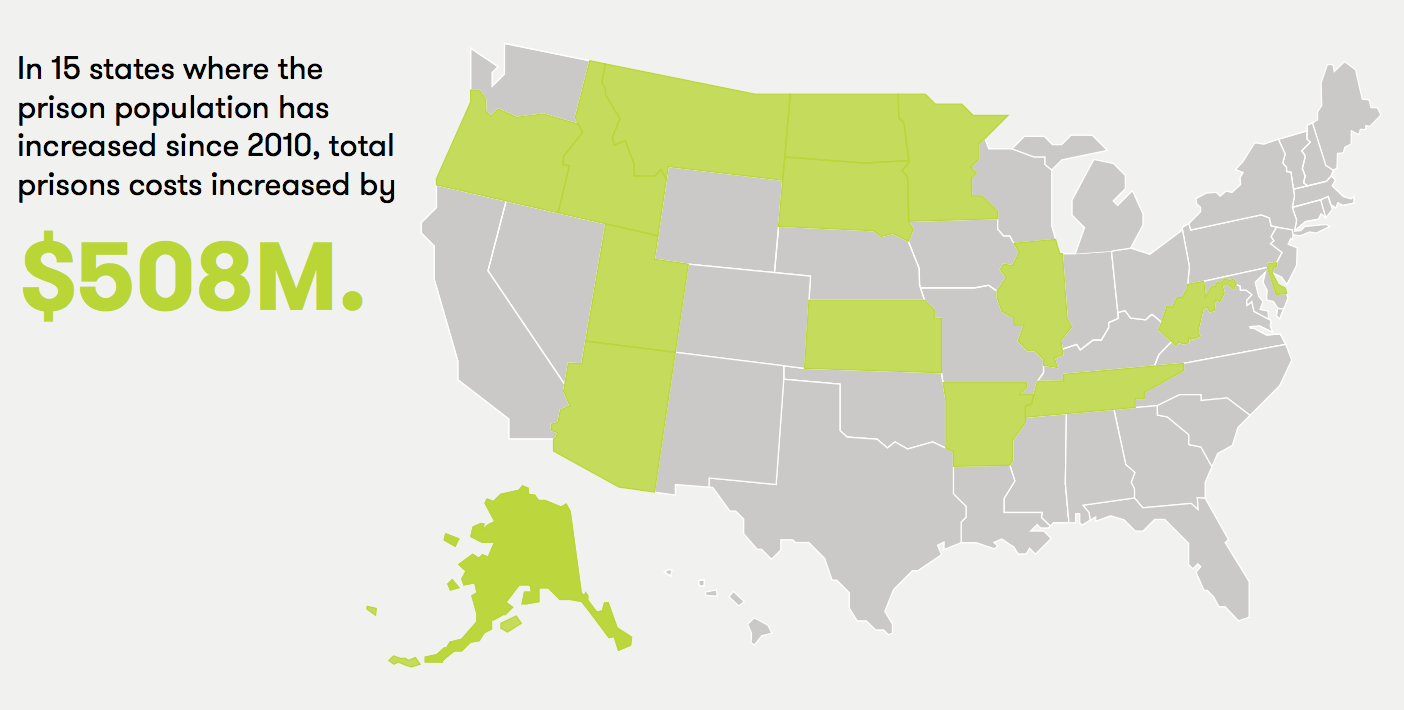Since the number of inmates in United States prisons peaked at 1.4 million in 2009, there has been broad, bipartisan support for criminal justice reform that reigns in both prison populations and spending. These efforts have been largely successful: Today, there are some 77,000 fewer people in prison than in 2009, which has led to a $232 million drop in prison costs nationwide. But those savings don’t always go to the states that have best managed to prune their prison populations.
A new report from the Vera Institute of Justice, a criminal justice non-profit, on the total costs of running prisons found that, between 2010 and 2015, 20 states managed to decrease spending. Given that prison personnel costs—including salaries, benefits, and overtime—accounted for over two-thirds of prison spending, many states (New York and New Jersey among them) that decreased spending did so by cutting workforce numbers in tandem with prison populations.
Only Oklahoma and Nevada decreased spending by reducing employees while increasing prison populations. Meanwhile, at least 25 states saw an increase in spending thanks largely to rising employment and health-care costs.
Below, four maps from Vera’s report that show how population and spending trends varied across the U.S.:








